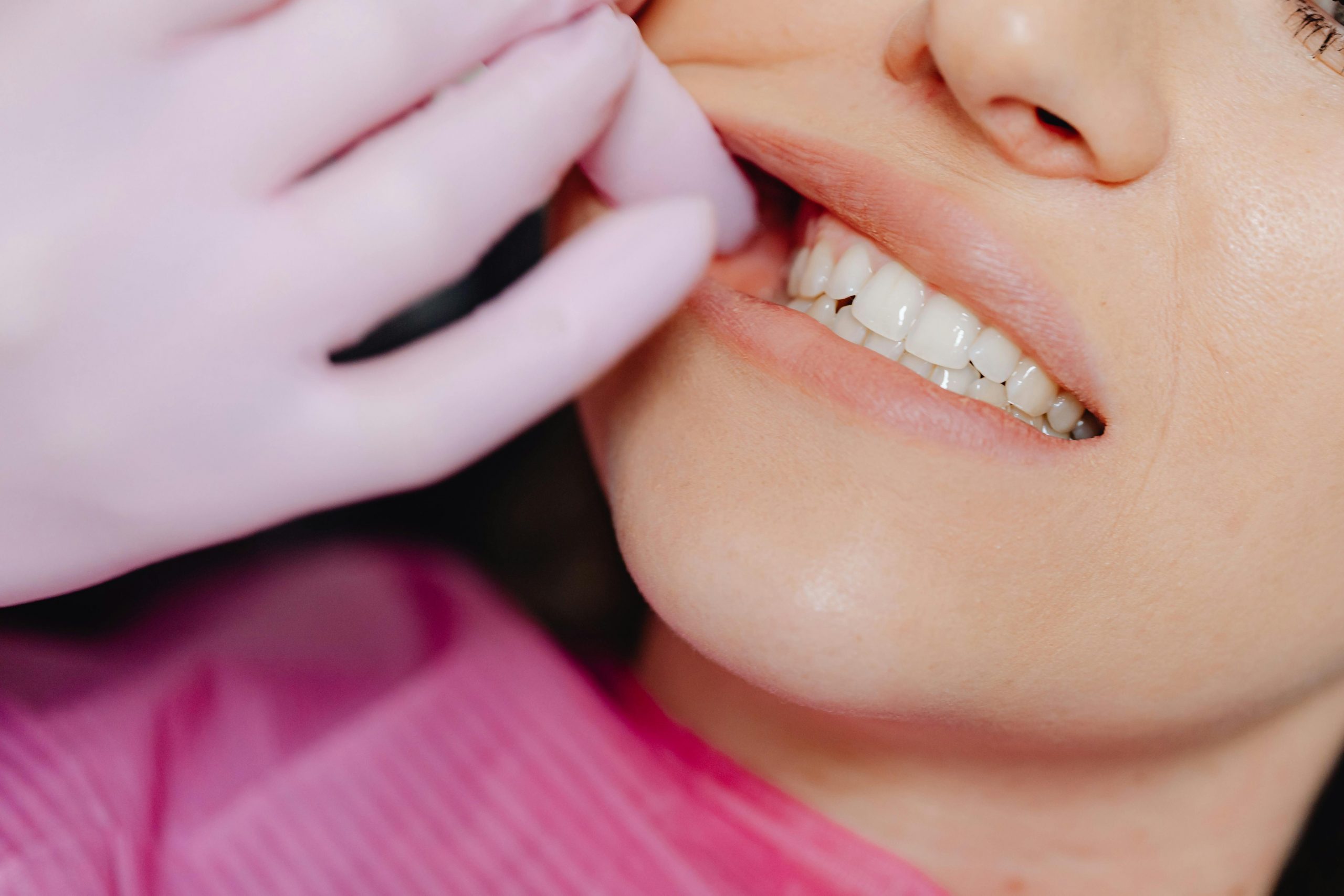Tooth Sensitivity and What It Means
Tooth sensitivity can appear out of nowhere. One moment you enjoy your snack and the next moment a sudden sting hits. Many people wave it off thinking it is just a brief reaction. But this tiny spark can be an early warning of worn enamel or even early decay. The longer it stays the more damage it may hide beneath the surface.
Gum Irritation and Bleeding
Gums are not supposed to bleed during brushing. Many people still ignore it because it looks minor. A little red color on the toothbrush seems harmless but it is not. It often signals irritation or the beginning stage of gum disease. Addressing it early always saves time and protects your smile.
Build Up on the Teeth You Should Never Overlook
Plaque starts gentle and soft but it never stays that way for long. If it sits too long it hardens into hard plaque on teeth, creating a rough layer that ordinary brushing cannot remove. Only a dental cleaning can clear it safely. Leaving it there invites gum disease cavities and never ending bad breath. It also dulls the smile and makes teeth look stained which affects confidence slowly over time.
Persistent Bad Breath
Bad breath is more common than people admit. Sometimes it is only caused by food but long lasting odor often has a deeper cause. It might be bacteria hiding in spaces brushing cannot reach. It might be early gum disease or dryness in the mouth. When the smell continues even after cleaning the mouth a dentist can help find the real reason. Fixing that reason usually brings freshness back.
Pain After Dental Procedures
Some soreness after dental work is normal. The mouth reacts to cleaning, drilling or pressure. But sharp pain that keeps increasing is not normal at all. Many people wait thinking it will settle but that delay can create more trouble. It may be irritation infection or an issue with how the bite fits together. Early checks keep the healing smooth and comfortable.
Changes After Wisdom Tooth Extraction
Wisdom tooth removal is a common experience and the recovery phase often feels strange. Many people feel some discomfort and puffiness around the area. A common thing people notice is swelling after wisdom teeth removal which usually peaks in the first few days. But when swelling grows instead of shrinking the situation becomes serious. It might be an infection or a dry socket and quick care can save you from days of discomfort.
Mouth Sores That Do Not Heal
Mouth sores are common and often harmless. They appear from biting the cheek or from a rough toothbrush. Most fade on their own within two weeks. But a sore that sticks around longer needs attention. Sometimes it is a simple irritation and sometimes it is a sign of infection or nutritional issues. Early checks help rule out anything serious.
Cracked or Broken Teeth
A cracked tooth does not always hurt at first. You might feel a little twinge when chewing or notice a sharp edge. People often ignore these signs and continue eating normally. But cracks grow quickly and can reach the nerve inside. Once they reach deeper layers the damage becomes more painful and complicated. Early repair saves the tooth from bigger procedures.
Receding Gums
Receiving gums happens so slowly that people rarely notice them at first. Teeth begin to look longer and sensitivity becomes more common. Many times people brush too hard or have gum issues without realizing it. Once gum tissue pulls back it never comes back naturally. Dentists can slow the process, stop further recession and protect the roots from sensitivity and decay.
Loose Teeth or Shifting Bite
Loose teeth in adults are serious. They should feel firm and stable at all times. If a tooth begins to move even a little it signals a deeper issue. Gum disease injury or constant grinding can weaken the bone around the tooth. A shifting bite can also appear when teeth change position. Fast treatment can prevent loss and protect the surrounding teeth.
Sudden Tooth Discoloration
A tooth that darkens fast needs attention. Sometimes it is only a food stain but rapid color change often means something inside the tooth is changing. It might be nerve damage or deep decay spreading through the inner layers. Dentists can check the color pattern and find the real cause. Early treatment keeps the tooth healthy and prevents future pain.
Final Thoughts
Dental issues look small in the beginning but they grow quietly when ignored. Paying attention to early signs is the easiest way to avoid pain and bigger problems. Regular checkups brushing and flossing are simple tools that protect your smile for years. Your mouth deserves proper care because it affects your confidence, your comfort and your health. Listen to the small signs your teeth and gums give you. They always reveal problems before they become serious.
Frequently Asked Questions
Why do my gums bleed when I brush
Bleeding gums mean irritation or early gum disease. Improved brushing helps but repeated bleeding needs a dentist check. Quick care prevents bigger gum problems.
How often should I get a dental cleaning
Most people need cleanings every six months. Some need them more often because of buildup or gum issues. Your dentist can guide you based on your needs.
Is it normal to have pain after fillings
Mild soreness is normal for a short time. Sharp or growing pain is not and needs a dental visit. Early checks stop infections or bite problems.
Can a cracked tooth heal on its own
No. Teeth cannot heal cracks naturally. Only a dentist can repair them before they spread deeper and become painful.
